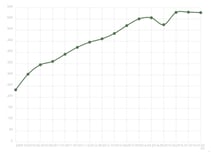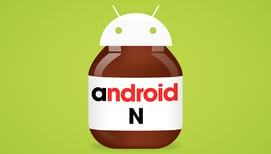Digital healthcare trends are among the key phenomenon driving the next cycle of transformation in the healthcare industry. Beyond its impact in shaping delivery and payment model innovation in healthcare, it has been the primary catalyst for accelerated innovation cycles in both consumer and enterprise focused health management tools.
With innovations targeting just about every corner of healthcare the honouree companies offer technologies across a range of categories including, clinical solutions, wearable technologies, healthcare applications, medical devices, and data analytics.
This year’s list reveals some interesting insights into the growing adoption of mobile and digital technologies. Stats say that:
# European companies make up a larger proportion of the list this year rising to 40 per cent,
This seems to reflect a wider growth trend for digital healthcare solutions across European markets.
# Digital health solutions are incorporated at scale, where they could generate 600 billion USD to 800 billion USD of global opportunities.
# Global mobile healthcare market was at 6.3 billion USD in 2013 and is expected to reach 20.7 billion USD by 2018, a compounded annual growth rate of more than 27 percent.
# 500 million consumers and healthcare providers will use a healthcare mobile app by 2015
# 72% of internet users say they looked online for health information within the past year
Digital health is a wide reaching term, covering everything from wellness focused fitness apps to online appointment booking services, remote monitoring of chronic conditions to centralized healthcare records.
There are other value generating digital health activities, such as health plan selection and online insurance but health improvement services such as value-based care, patient engagement, and data analytics are three of the biggest trends in healthcare.
Opportunities Through Mobile Apps
Health-related apps are programs that act as your own personal trainer, track and analyse your basic health and exercise data, provide you nutritional and dietary instruction while counting the calories you consume, offer a litany of brainteasers and games that improve cognitive and linguistic faculty, regulate your sleep cycle and help you meditate, and encourage productivity through incentives and gentle reminders.
Consumers gain more flexibility and control over how they spend their dollars and providing tax-advantaged health savings accounts to speed up this transition.
We’re already witnessing the confluence of emerging technology with healthcare and an increasing awareness of our own bodies, and this trend will only continue to develop and expand. All of this new technology, from apps that function as personal trainers to lifesaving pocket-sized devices, represent an enormous wave of digital disruption for the medical industry in its present form. If your phone is essentially helping you to predict and prevent medical problems, providing a more intimate, personal level of service than your doctor ever could, your need for basic medical services and consultation will likely decrease.
The patients are increasingly taking control over their own health, and these patient-friendly advancements will only continue developing in the near future. 17% of the population is currently tracking a key health factor in a mobile application, suggesting that this category has begun to move beyond the “quantified self” movement. With significant parts of the population tracking multiple key health factors on paper or in their heads, it is not surprising to see some of these activities move towards mobile devices.
Physical activity was the sole health factor that more people tracked in a mobile app than on paper or in their heads. It is likely that passive monitoring has played a major role here, with motion sensors embedded in the vast majority of smartphones. Despite the noted lack of interest in heart rate tracking, we expect the proliferation of heart rate monitors on wristbands and smartwatches to push the percent tracking on mobile to grow quickly.
Wearables and telemedicine are set to be the fastest growing digital health markets-
It is found that these two categories are likely to grow the fastest over the coming twelve months with telemedicine at 100% adoption growth and wearables at 40%. Awareness of these technologies is surprisingly high and nearly all of the digital health categories are under-penetrated compared to the number of individuals who are considering using them.




